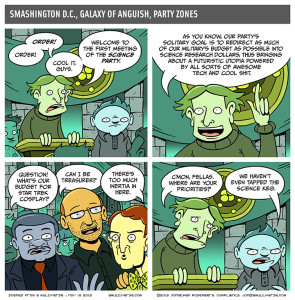My Favorite Scientists
A friend of mine recently told me about how when he was younger, Ender’s Game¹ was his favorite book, and now many years later, his mother had read it and while it wasn’t necessarily her cup of tea, she understood exactly why it was his favorite: Because the hero is a pre-teen that saves the world in space by playing videogames. Oooh, burn, Mom.
Likewise, Richard Feynman will always be my favorite scientist; as a little baby engineer, his famed audiotaped² lectures on physics were considered a marvel of clarity, and then early in my undergraduate career the first of his autobiographical volumes came out³ and we learned something else about Feynman — he screwed around (literally and figuratively) and had fun and lived his life in a way that exemplified the notion that if you weren’t overly concerned with what other people thought about you, it was probably for the best.
He was a complex, brilliant, difficult, charming, obnoxious genius that wanted to know the why and how of everything, a man who at certain points of his life knew things that literally no other human knew, a man who could reduce the most complex concepts in physics to squiggles on a chalkboard, a man who joked and told stories and played in samba bands, a man who got laid a lot. Around 20 years old he was everything I might aspire to be, and it’s one of the great losses of my life that I’ll never get to meet him4. He was nowhere near as awesome as his stories made him out to be, probably, but that’s part of the point of telling stories, getting to make yourself look better.
Two years ago he got a really good biographical treatment — certainly not his first — in graphical form, from Jim Ottaviani and Leland Myrick, published by the good folks at :01 Books. Given the importance of Feynman Diagrams (the aforementioned squiggles) in modern physics, having his story told in slightly squiggly pictures is a natural. It’s hard to think how they might top themselves.
Until now.
Ottaviani and Myrick are taking on the one physicist who may be as influential, as complex, as colorful a character, with as involved and messy a life as Feynman (although he was probably never investigated by the FBI as a possible subversive): Stephen Hawking. And given that Hawking has been locked into his own body for decades, unable to speak for himself, the silent medium of graphic fiction may be the most expressive means of describing the inner thoughts of the man. Oh, and the fact that he’s still alive to talk to doesn’t hurt; that’s not just an abstract possibility, by the way:
Hawking author Jim Ottaviani says, “July 4, 2012 was a good day in physics and for Gordy Kane, Leland and me. Not only was the Higgs boson revealed to the world, but Gordy — a prominent physicist and author of The Particle Garden — won a long-standing $100 bet with his friend Stephen Hawking on whether there even was a Higgs. And in an email letting us know about these things, Gordy and his wife Lois also added an ‘Oh, by the way….’ They told us that Stephen had read and enjoyed our Feynman book (!) and invited us to come to Cambridge and talk about doing a book about him. We didn’t get on a plane that same afternoon, but we did start planning our trip, and this book. Like I said, a good day.”
Hawking is due for release in 2016, and a preview is presently available on Boing Boing. It’s not much compared to the full book, and it’ll likely be different by the release date, but it’s enough for now.
_______________
¹ No link because seriously, screw Orson Scott Card.
² “Tapes” were these things that stored information on long strips of magnetic ribbon. Ask your parents.
³ The sequel was posthumous, and in large part dealt with his role in the Challenger disaster investigation, which also resonated for us. It was January of my freshman year when the associate dean of students Tom Miller (aka your official buddy at Rose-Hulman; by the way, he’s still there and still your buddy despite the fancy VP title and tie) found me and some friends on a couch in the Union building and told us, The Space Shuttle just exploded.
That day, more than any other in our technical education, reinforced the idea that our actions as engineers would have consequences. We wouldn’t know for a long time what had gone wrong, but something had — something was missed, or not anticipated, or done wrong.
4 Others on that list: Claude Shannon, Chuck Jones, Jim Henson, Stephen Jay Gould.

My life is just a series of sick burns from my mom.
By Dan Stefanidis on 11.19.13 9:58 am
The above comments are owned by whoever posted them. The staff of Fleen are not responsible for them in any way.